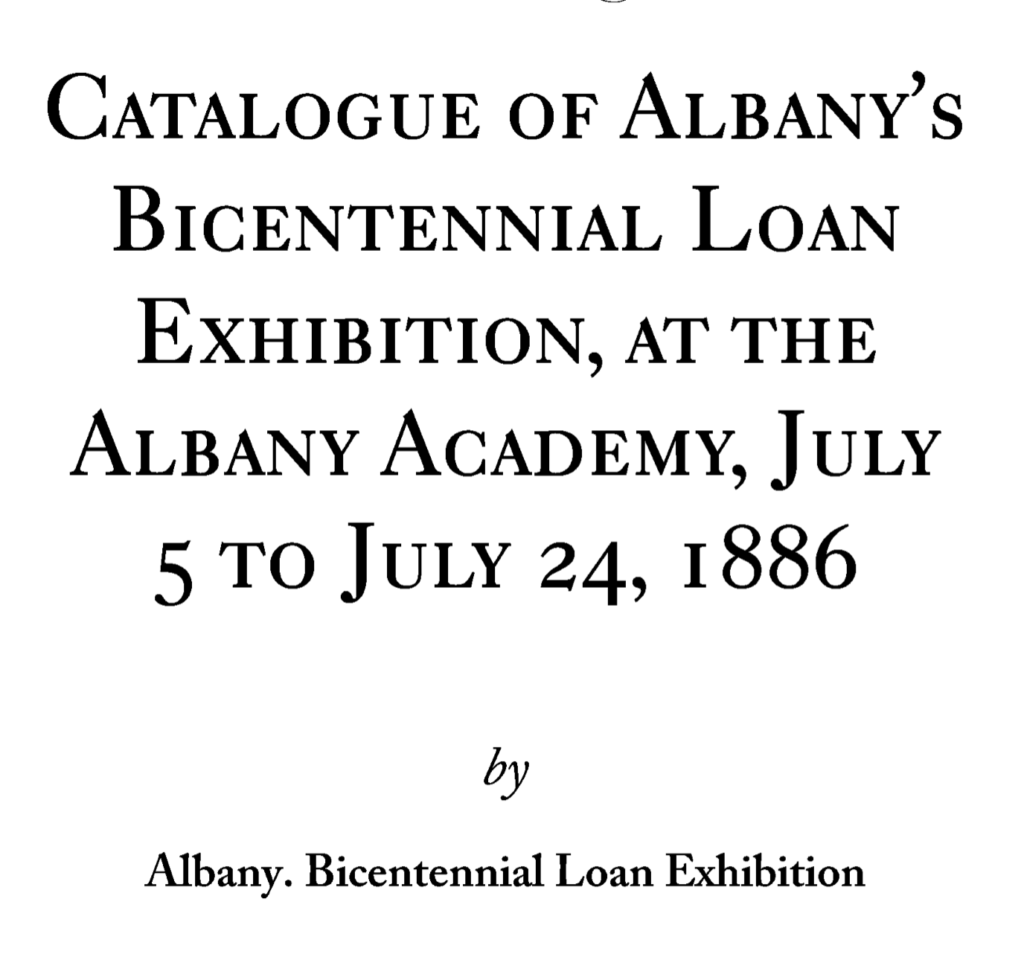
Back in 1886, Albany celebrated its bicentennial (dating back to its charter as a city, not its founding) with a grand exhibition held at the Albany Academy. That building, where Joseph Henry figured out inductance while teaching schoolboys, still stands in Academy Park.
This exhibition, unfortunately, had little or nothing to do with Albany itself, but was a way to show off items of supposed historic or cultural importance that were borrowed from local collections.
“The exhibition is designed especially to illustrate the growth, development and historic past of Albany . . . and to awaken an interest in the men and events which have made the city famous throughout the United States. At the same time it is not limited in scope to historic Albany. It includes any thing of interest in connection with the colonial or State governments of New York and surrounding comonwealths, and all articles of value or artistic worth . . . .”
“The exhibition is in the Albany Academy building, which, from its central location near the Capitol, is admirably adapted for such a purpose.” It was open from July 5 until July 24, Sundays excepted. Admission was twenty-five cents, or season tickets (“not transferable”) were available for $1.00.
“There are seven general departments of the exhibition proper. The Department of Pictures, Prints and Statuary occupies the east room in the second story. On account of lack of space many of the Prints have been placed in the Book and Manuscript room. The Department of Old Furniture, Ancient Dress and General Relics, the south-east room on the principal story. The Department of Ceramics, Glass and Ivories, the north-east room on the principal story. The Department of Bric-a-brac, Old Silver and Personal Ornaments, the east room on the second story. The Department of Books, Pamphlets, Maps and Manuscripts, the north-east room on the principal story. The Department of Indian Relics and the Department of Relica of the Civil War, the south room on the second story.”
You know you want to go to the Department of Old Furniture, Ancient Dress and General Relics.
Next: What was displayed.

Leave a Reply